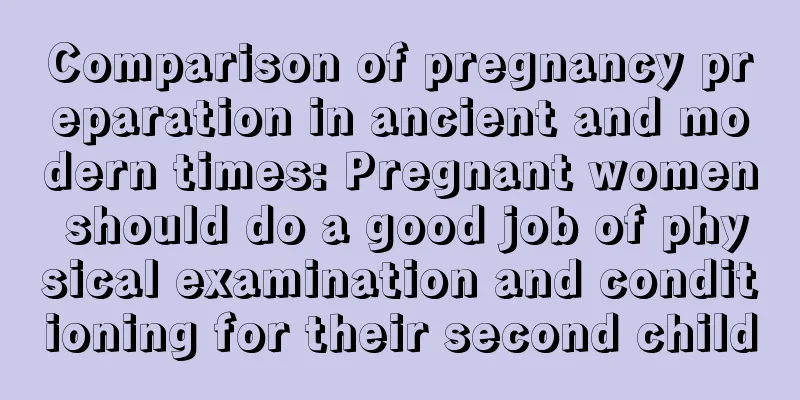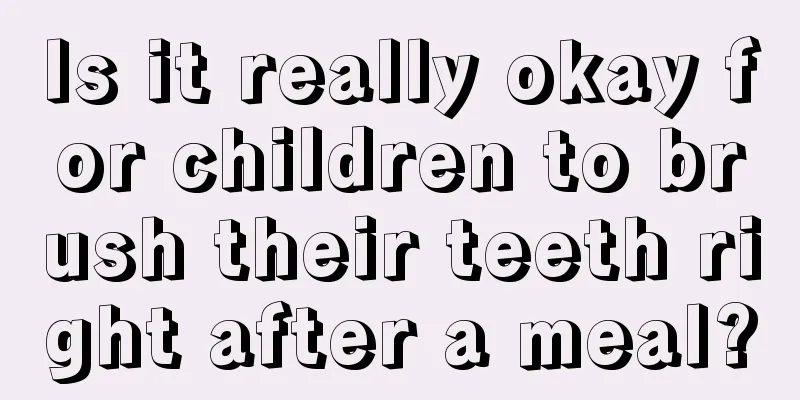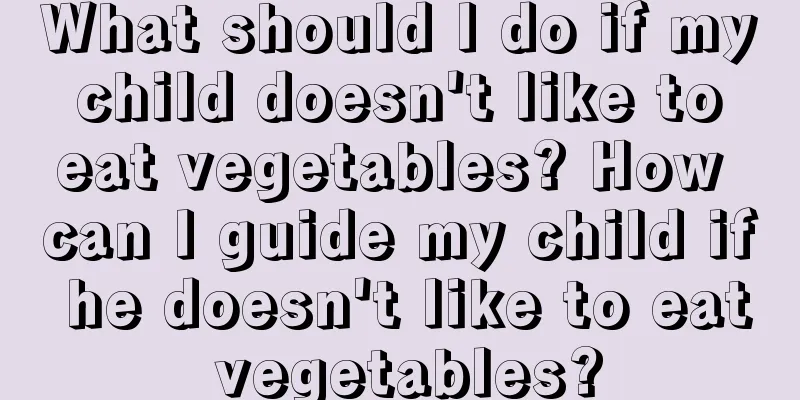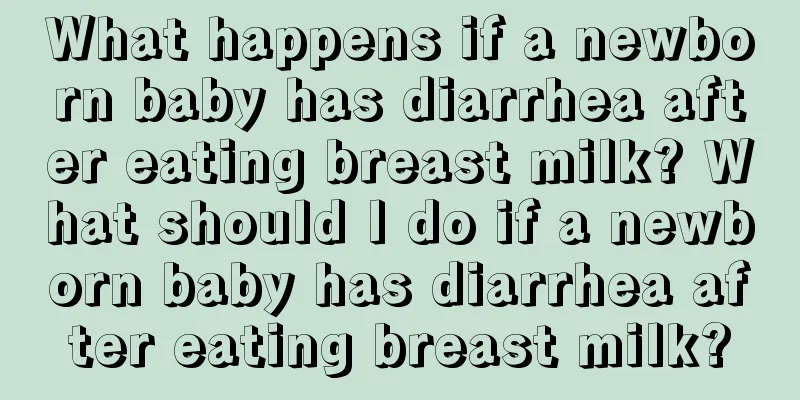The order and time of children's tooth replacement. How long does it take for children's teeth to grow out?
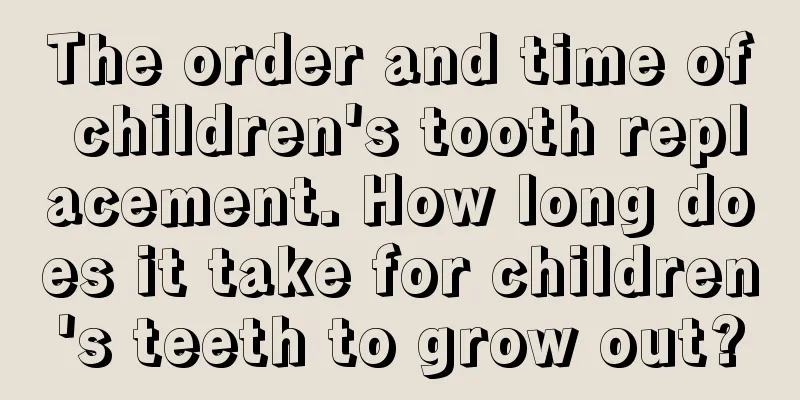
|
We all know that children will experience tooth replacement as they grow up, but few parents know the time and order of their children's tooth replacement. So here we will learn about the order and time of children's tooth replacement. How long does it take for children's teeth to grow out? The order and timing of children's tooth replacementChildren usually start to change their teeth around the age of 6. The physiological shedding of the first deciduous tooth usually occurs around the age of 6, but it can also happen as early as 4 years old, or as late as 7-8 years old. There is no need to worry. Naturally fallen deciduous teeth have no roots, and the fallen surface looks like a nibbling tooth. Parents should pay attention to it and not confuse it with the broken roots of deciduous teeth. The order in which children replace their teeth is: 1. When children are 6-8 years old, they begin to grow their first permanent tooth, the central incisor, and the first molar also grows slowly. 2. When children reach 8-9 years old, lateral incisors begin to grow. 3. The bicuspids of children aged 10-12 begin to grow, and the first bicuspids will grow first, which is next to the lateral teeth. 4. When children are 11-12 years old, the upper and lower canines have gradually grown out. 5. Children aged 12-13 begin to grow second molars. 6. The last third molar, also known as the wisdom tooth, will not begin to grow until the child is 17 years old, and will continue to grow until the age of 21, which varies from person to person. How long does it take for children's teeth to grow out?Normally, at the age of 6 to 7, the deciduous central incisors (central front teeth) of the mandible begin to shake and fall out, and soon, permanent central incisors grow out here; at the same time, the first molars grow behind the second deciduous molars. After that, other teeth are replaced one after another. The permanent single canines and bicuspids can only grow out after the deciduous teeth in the same position fall out. It is not until the age of 12 to 13 that all the deciduous teeth fall out and the permanent teeth replace them. After that, the permanent teeth grow out alone: the second molars grow behind the first molars at the age of 12 to 14, and the third molars grow after the age of 18. It is normal for some people not to have third molars. The order and time of tooth replacement are roughly as follows: Tooth position Number of teeth Time of tooth replacement Central incisor 4 teeth 6 - 7 years old Lateral incisor 4 teeth 8 - 9 years old First bicuspids 4 teeth 10 years old Monocuspids 4 teeth 11 years old Second bicuspids 4 teeth 12 years old First molars 4 teeth 6 years old Second molars 4 teeth 13 years old Issues to note during tooth replacement Retained deciduous teeth: Deciduous teeth do not fall out when they should. Doctors call this phenomenon retained deciduous teeth. Children should be taken to the hospital for examination and treatment in time. How many teeth should children replace?Normal children have 20 deciduous teeth, and adults have 28-32 permanent teeth. Children need to replace a total of 20 teeth. From the age of 6, permanent teeth begin to slowly erupt. By the age of 13, all deciduous teeth are generally replaced. The period from 6 to 13 years old is called the tooth replacement period, which means that both deciduous teeth and permanent teeth exist in the mouth. During this period, due to the disorder of teeth in the mouth, poor oral hygiene maintenance of children may lead to the occurrence of caries and gingivitis. It is recommended that parents teach their children to brush their teeth carefully and maintain good oral hygiene during the tooth replacement period until all deciduous teeth are replaced. What should children pay attention to when changing their teethUsually pay attention to the following three points: First, during the process of tooth replacement, deciduous teeth generally become loose. Some children dare not chew with loose teeth for fear of pain when chewing. It is recommended that children chew with loose teeth to make them slowly loosen and then fall off by themselves. Second, some children's deciduous teeth have not fallen out, and permanent teeth have already grown out. This situation is called retained deciduous teeth. It is recommended to go to the hospital to remove the retained deciduous teeth. Third, some parents think that the deciduous teeth are already very loose and remove them at home. It is not recommended to extract deciduous teeth at home, because there are no sterilized instruments and cotton balls at home, which is prone to wound bleeding and tooth extraction wound infection, and the tooth roots may not be extracted cleanly. |
<<: How to make baby rice cereal? What are the precautions for babies to eat rice cereal?
>>: Will pinching a baby's nose make it straighter? What are the harms of pinching a baby's nose?
Recommend
How old is considered an advanced maternal age? Is it better for an advanced maternal age mother to have a natural birth or a caesarean section?
Many women have to have children in their 30s due...
What degree of water should be used to mix Feihe milk powder? What series of Feihe milk powder are there?
Feihe milk powder is a brand of milk powder that ...
What are the benefits of doula delivery? How should the mother cooperate with the doula during delivery?
Pregnant women who are afraid of giving birth can...
How long does it take to fully charge a Philips electric toothbrush? What does the beeping sound mean when a Philips electric toothbrush is charging?
Electric toothbrushes are really good to use, but...
Who determines the IQ of the fetus? What does the IQ of the fetus relate to?
Who determines a child's IQ? Many people mist...
How about Abbott's Pure Milk Powder? Is Abbott's Pure Milk Powder suitable for teenagers?
I heard that Abbott's PureZhi milk powder is ...
How can parents encourage their children to cheer up when they are in a bad mood?
Everyone has downtime, and so do babies. They may...
What are the inappropriate complementary foods for babies?
When babies reach the age of six months, they sho...
What is the effect of getting angry during breastfeeding on the baby? Will getting angry during breastfeeding affect the baby's getting angry?
Does getting angry during breastfeeding affect th...
Will edema during pregnancy affect the fetus? Mild edema will not
Many mothers will experience edema during pregnan...
Can I wean my baby during the End of Heat? Is it good to wean my baby during the End of Heat?
End of Heat is a solar term after the Beginning o...
How to stop children's bad behavior
Children love to talk back? How to stop children&...
What is Colgate toothpaste like? Which country is Colgate toothpaste a brand of?
Colgate toothpaste has been with us for many year...
What is the difference between brushed and pure cotton? What is brushed fabric?
Many people don’t know the difference between san...
How long will it take for a pregnant woman to give birth after the appearance of cervical mucus?
The mother just woke up and found a yellowish, tr...
